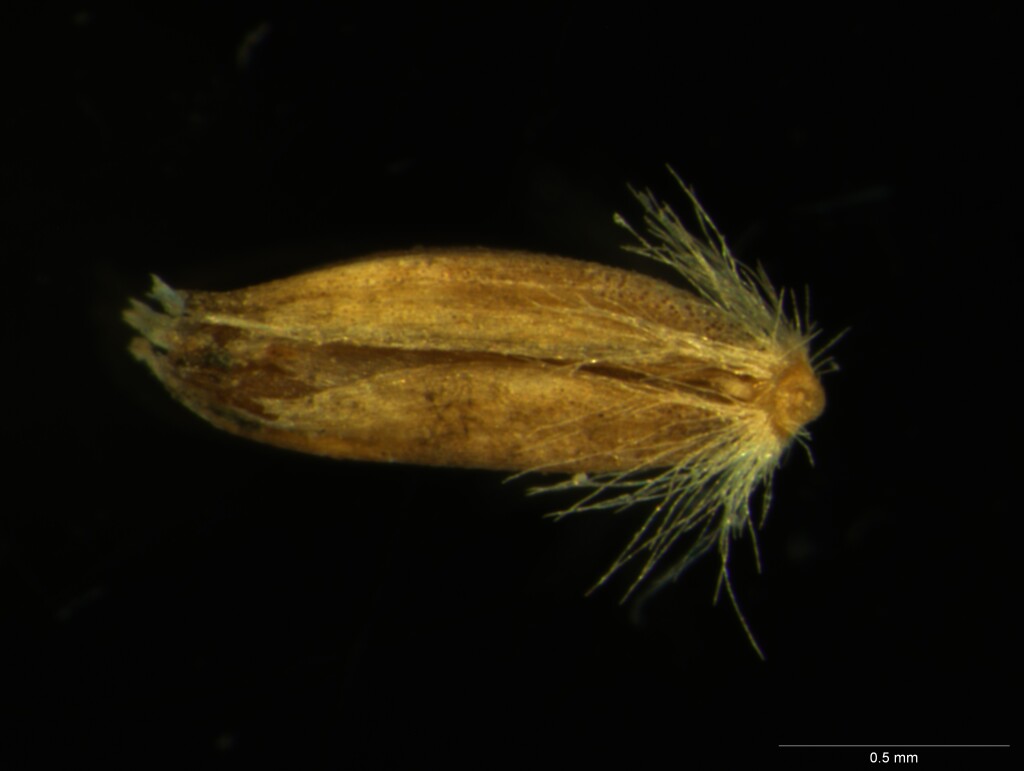Deyeuxia decipiens
(R.Br.) VickeryTufted perennial, culms erect, to 100 cm high. Leaves slightly scabrous, finely ribbed; blade loosely to closely inrolled, to 30 cm long and 4 mm wide when flattened, erect and sharp-pointed; ligule obtuse, 1–4 mm long. Inflorescence initially contracted, but finally open with spreading branches, the spikelets somewhat clumped toward the ends of the branches, 12–30 cm long. Spikelets 1.5–3 mm long, usually purplish on the tips; glumes acute, the lower usually slightly shorter, scabrous-pubescent along the keel; lemma equal to or exceeding upper glume by up to c. 1 mm at maturity, prominently 5-nerved, virtually smooth, not conspicuously thickened, awned from just below the apex; awn rudimentary but thickish, not exceeding lemma; callus hairs to c. 1 mm long; rachilla bristle absent or extremely rudimentary; anthers c. 0.5 mm long. Flowers Dec.–Mar.
EGL, EGU, VAlp. Also Qld, NSW. Known in Victoria from few collections (near Buchan and Genoa), mostly in seasonally damp heathland or heathy open-woodland. Otherwise a species predominantly of dryish sandstone country around Sydney.
The tufted habit and open inflorescence of this species are unusual in Deyeuxia and superficially resemble those of many Poa species. It's possible that the epithet, decipiens (Latin for deceptive) refers to this feature.
Walsh, N.G. (1994). Poaceae. In: Walsh, N.G.; Entwisle, T.J., Flora of Victoria Vol. 2, Ferns and Allied Plants, Conifers and Monocotyledons, pp. 356–627. Inkata Press, Melbourne.
 Spinning
Spinning

